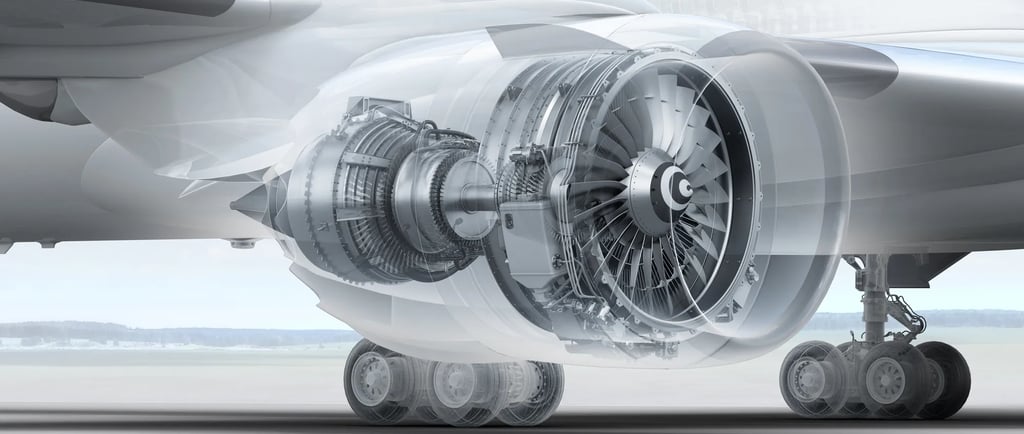How does a jet engine work?
Jet engines are what make modern planes fly fast and far. But how do they actually work? Let’s break it down — simple and clear.
4/15/20252 min read


It all starts with air
Jet engines are air-breathing engines, meaning they need massive amounts of air to operate. The front of the engine features a large fan, which pulls in air. Some of this air flows into the engine core, while the rest bypasses around it (in high-bypass engines) and helps generate extra thrust—more on that in a second.
Compress → Burn → Blast
Inside the engine core, things get serious.
Compression: The air is squeezed by a series of compressor blades, increasing its pressure dramatically.
Combustion: Fuel is sprayed into this compressed air and ignited. Boom. You’ve now got hot, expanding gases.
Turbine: These gases spin a turbine connected to the compressor and fan—powering the whole system.
Exhaust: Finally, the hot gases shoot out the back at high speed, generating thrust.
It’s Newton’s Third Law in action: push air backwards → to get pushed forwards.
Fun fact: It’s continuous
Unlike a piston engine that works in cycles, a jet engine is continuous flow. Air is always moving, fuel is always burning, and thrust is always being produced (unless you’re flame-out—then good luck 😉).
What’s the deal with bypass?
Modern commercial engines are usually high-bypass turbofans. That means most of the thrust doesn’t come from burning fuel, but from the giant fan at the front pushing cold air around the engine core.
This design is:
More efficient
Quieter
Better for long-range flying
The fan is driven by the turbine at the back of the engine—so you still need combustion—but it makes the whole setup much more powerful.
Why should you care?
Whether you’re a curious enthusiast, a student pilot, or a frequent flyer, understanding the basics of how a jet engine works gives you a deeper appreciation for what’s happening on every flight.
Each time those turbines spool up and the aircraft starts its roll, you’re watching one of the most refined machines ever built in action—turning air, fuel, and fire into flight.
Want to learn more?
Every week, I post a new article that breaks down complex aviation topics into bite-sized, easy-to-read content. Check back next Monday or subscribe to the newsletter to stay in the loop
Created by a commercial pilot to share real-world aviation knowledge.
Join the newsletter to stay updated with weekly insights, articles, and exclusive book content.
contact@transitionaltitude.com
© 2025 Transition Altitude. All rights reserved.